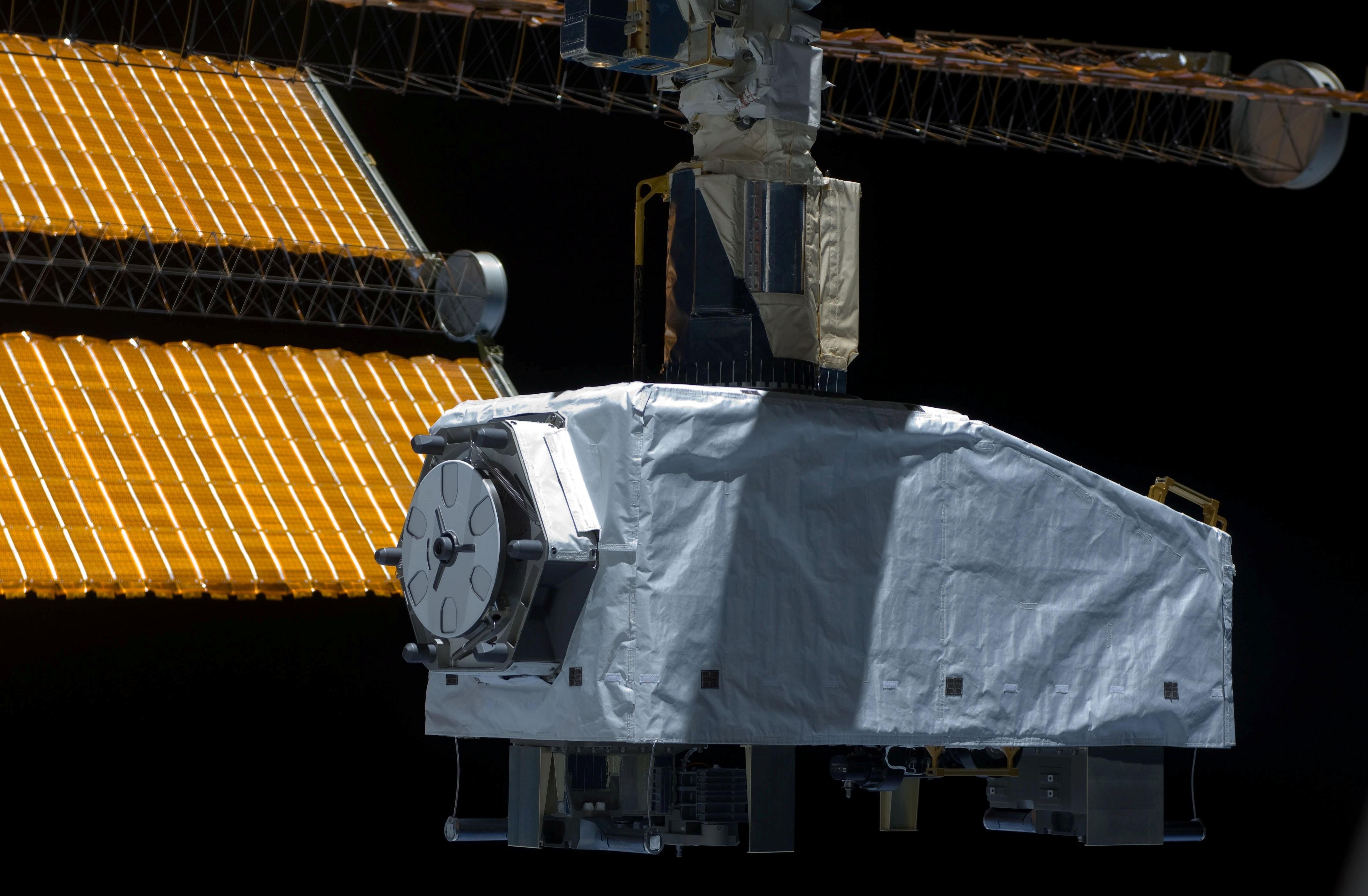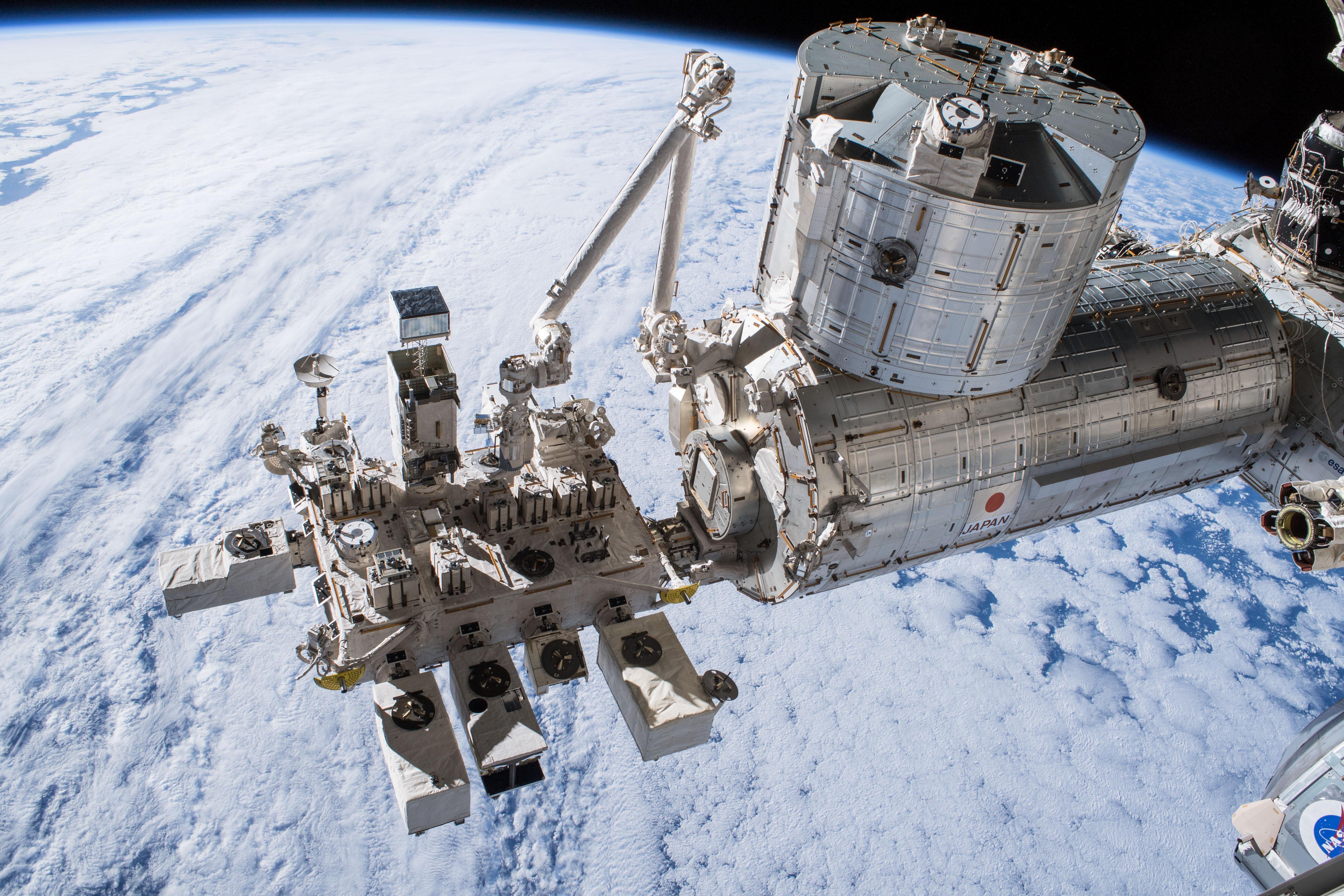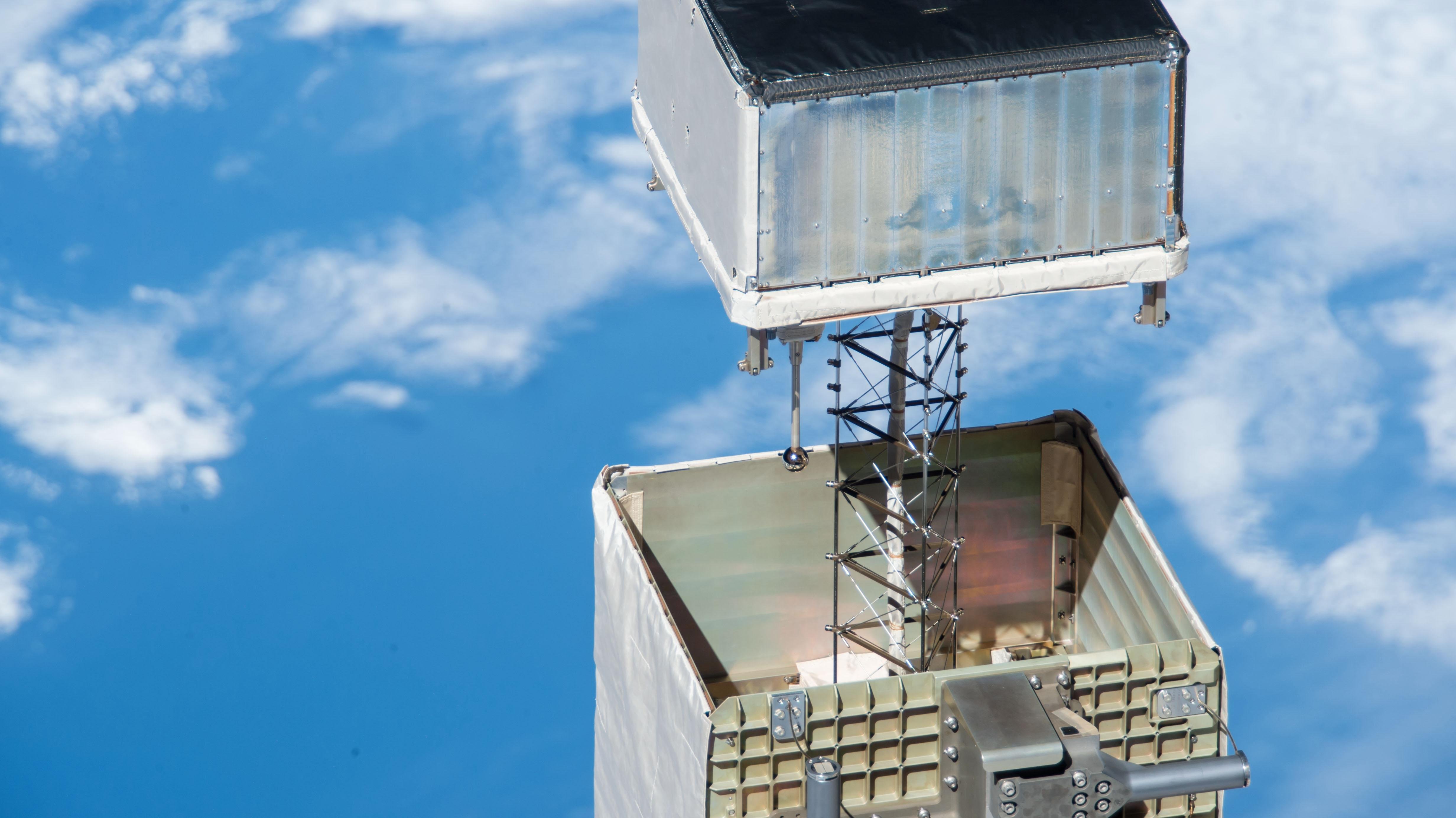- completed
[SEDA-AP]
Space Environment Data Acquisition equipment-Attached Payload
- Earth and Space Science
ISS Science for Everyone
SCIENCE OBJECTIVES FOR EVERYONE
The environment surrounding the International Space Station is exposed to ionizing radiation, micro-particles, and other hazards. The Space Environment Data Acquisition Equipment - Attached Payload (SEDA-AP) investigation consists of eight small instruments designed to measure the space environment. Five radiation and particle monitors, an electronic device performance monitor, a micro-particle capture , and a space environment exposure device will provide data to help researchers characterize the environment around space vehicles in low-Earth orbit, which will be used to develop shielding to ensure future spacecraft are safe.
SCIENCE RESULTS FOR EVERYONE
In space, radiation constantly bombards satellites, spacecraft, and the people inside them. To better protect vehicles and crews, scientists needed to characterize and understand the space environment around them. This investigation used seven small instruments, including five radiation and particle monitors and two electronic device performance monitors, to take measurements around the International Space Station for three years. The data will lead to safer spacecraft and hardier satellites, which will help improve broadcasting, communication, and car navigation systems.
Experiment Description
RESEARCH OVERVIEW
- The International Space Station (ISS) is in orbit around the Earth at an altitude of approximately 400km. Space around the station is a high-vacuum environment where the atmospheric density is one hundred millionth of that on the Earth's surface. Furthermore, the area is exposed to a barrage of radiation particles from the Sun and the galaxy. Radiation particles are made of high-energy particles that can inflict damage to surfaces on satellites and space stations, cause transmission failure and adversely affect the health of astronauts. Human activities have extended beyond our planet into outer space. As typified by satellite broadcasts and communications as well as car navigation systems, space has become an inseparable part of our lives. However, we must acquire a fuller understanding of space environments in order to utilize and operate in space safely. That is why SEDA-AP will be mounted on Japan's experiment module, Kibo, at ISS to take continuous measurements of on the 400-km altitude space environment along the space station's trajectory for a period of around 3 years.
- Development of the Flight Model (FM) of SEDA-AP has been completed and was launched on July 16 in 2009. SEDA-AP was attached to Exposed Facility (EF) of “Kibo” on July 25 using the robot arm of “Kibo”. Initial checkout was started on August 4 and successfully ended on September 17. MPAC&SEED sample returned to the ground by this flight. MPAC&SEED was sent out to Japan after it checked simply in KSC, and arrived at the Tsukuba space center on May 26, 2010.
- Spacecraft and devices that are durable to cosmic environments are critical in ensuring safe usage of space. The space environment data obtained by SEDA-AP will be used as a basis for designing spacecraft and their fixtures and developing materials. If changes in space environment can be predicted, space hazards such as equipment malfunction and risks of astronaut radiation exposure can be reduced or prevented by adjusting the orbit. Space weather forecasts, for predicting changes in space environment by monitoring the Sun's activities and magnetic fields around-the-clock, have already been started. It is hoped that SEDA-AP data will contribute to spacecraft operations, space weather forecasts and research in the fields of space and earth science.
DESCRIPTION
Application of the data is as follows:
- Development of various space environmental data base for many utilization needs. Making and maintenance of space environmental model for space craft design. Support for astronauts exposed to space radiation. Support for space weather forecasting. Contributions to scientific fields. Investigation of space radiation degradation of parts & materials and space craft anomalies caused by space environment.
- On-orbit verification of the "Kibo" exposed facility utilization technology. On-orbit verification of APBUS technology that utilizes the "Kibo" exposed facility On-orbit verification of experimental payload integration technology that utilizes the "Kibo" exposed facility. An overview, the principle of each instrument and initial observation results are as follows.
Neutron Monitor (NEM) Neutrons are very harmful radiation because of their strong permeability attributable to its electrical neutrality. The Neutron Monitor measures the energy of neutrons from thermal to 100 MeV in real time using a Bonner Ball Detector and a Scintillation Fiber Detector. The Bonner Ball Detector discriminates neutrons from other charged particles using 3He counters, which have high sensitivity to thermal neutrons. It also measures neutron energy using the relative response, which corresponds to different polyethylene moderator's thickness (6 pcs.). The Scintillation Fiber Detector measures the track of incident particles using a cubic arrangement sensor on which are heaped up 512 scintillation fibers. The sensor discriminates neutrons using differences of these tracks, and measures neutron energy by measuring its track length.
Heavy Ion Telescope (HIT) Using a Solid State Detector, the Heavy Ion Telescope measures the energy distribution of heavy ions (Li–Fe), which cause single event anomalies and damage to electronic devices. The Solid State Detector converts loss energy of heavy ions in the detector to electrical signals. The HIT measures an incident particle's mass from loss energy in each layer (ΔE) and the total loss energy of each layer (E) using the ΔE×E method. Plasma Monitor (PLAM) Using a Langmuir probe, Plasma Monitor measures the density and electron temperature of space plasma, which cause charging and discharge of the spacecraft.
Standard Dose Monitor (SDOM) The Solid State Detector and scintillator of the Standard Dose Monitor measure the energy distribution of high-energy light particles such as electrons, protons, and alpha particles, which cause single event anomaly and damage to electronic devices.
Atomic Oxygen Monitor (AOM) The Atomic Oxygen Monitor (AOM) measures the amount of atomic oxygen on the orbit of the International Space Station. Atomic oxygen interacts with the thermal control materials and paints, thereby degrading their thermal control ability. The AOM measures the resistance of a thin carbon film that is decreased by atomic oxygen erosion.
Electronic Device Evaluation Equipment (EDEE) The Electronic Device Evaluation Equipment measures single-event phenomena and radiation damage to electronic parts. Single-event phenomena are induced by the impact of an energetic heavy ion or proton. The occurrence of single-event phenomena is detected by bit flips of memorized data, the sudden increase of power supply current, etc.
Micro-Particle Capturer (MPAC) and Space Environment Exposure Device (SEED)
The Micro-Particle Capturer is a device used to capture micro-particles that exist on orbit. Silica-aerogel and gold plates are used to capture micro-particles. After the retrieval of MPAC, the size, composition, and collision energy, etc. of captured particles are evaluated.
The Space Environment Exposure Device is a device used to expose materials for space use. After SEED retrieval, degradation of these materials caused by the space environment, such as high energy radiation, atomic oxygen and UV, will be evaluated.
Media Gallery




Applications
SPACE APPLICATIONS
Radiation from the sun and other cosmic sources can damage satellites, interfere with electronic equipment, and harm astronauts’ health. Space environment data obtained using SEDA-AP will be used to design more durable spacecraft that can better withstand these hazards. Instruments mounted on the exterior of the Kibo laboratory monitor several types of radiation, as well as microscopic particles.
EARTH APPLICATIONS
Results from SEDA-AP will help to support space weather forecasting, and contributions to the study of many other scientific fields. Space environment data measured by SEDA-AP, is distributed by the Space Environment & Effect System (SEES; http//sees.tksc.jaxa.jp) and is used widely by academic and industrial users in laboratories, universities, JEM experiment investigators, and others in support of spacecraft operations, engineering fields, and general scientific research.
Operations
OPERATIONAL REQUIREMENTS AND PROTOCOLS
SEDA-AP was launched by Flight 2J/A fixed to ELM-ES. The location of SEDA-AP on ISS/JEM Exposed Facility is EFU#9. MPAC&SEED was removed from SEDA-AP by EVA and return to the Ground.
On-orbit environment measurement at the mast extended condition for three years. After three years operation, SEDA-AP will be disposed by HTV except MPAC&SEED. MPAC&SEED was removed from SEDA-AP by EVA and return to the Ground.
Publications
PRINCIPAL INVESTIGATOR(S)
JAXA
Unless specified otherwise, rights to all images belong to ©JAXA



